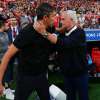Many beginners’ turnovers look the same: a confident dribble, a pause, a split second of doubt — and the ball is already with the opponents. Almost always that’s a double dribble. The violation is simple in wording but tricky on the court: one wrong fixation of the ball and the right to attack goes to the other team. Let’s break down what exactly is prohibited, how double dribbling differs from other errors, and how to stop gifting possessions for nothing.
Definition by the Rules: What Counts as a Double Dribble
A double dribble is a violation arising from improper ball handling during a dribble. It occurs in two basic cases:
- The player dribbles, then ends the dribble (secures the ball with both hands, picks it up, or allows the ball to “come to rest” in the hand) and starts dribbling again.
- The player propels the ball with both hands at the same time (or alternates both hands as if “rolling” it along the floor).
The key idea: in each possession a player has only one dribble. Once you end it, you cannot start a new one without external interference (for example, an opponent’s touch). Receiving a pass or a rebound and starting the first dribble is legal. Ending the dribble and starting a second one is a violation.
Where the Lines Are: Double Dribble, Traveling, and Carrying
These three mistakes are often confused, but each has different logic:
- Double dribble — resuming the dribble after securing the ball with both hands, or dribbling with two hands.
- Traveling — illegal steps without a dribble: the player with a secured ball takes too many steps, violates the pivot foot, or starts moving before the dribble.
- Carrying (palming) — the hand goes under the ball during the dribble, the ball effectively comes to rest, and then the dribble continues. Essentially it’s a “pause” in the dribble that is ruled a control violation.
Visually they look similar, but the criteria differ: either we look at the number/legality of steps (traveling), the continuity and technique of the bounce (carrying), or the number of independent dribbles in one possession (double dribble).
Typical On-Court Scenarios
- Stop Under Pressure. The point guard stops, squeezes the ball with both hands, looks for a pass — and instinctively starts bouncing it again. The whistle is inevitable.
- Awkward Pass Fake. A player fakes a pass, gathers the ball with both hands, changes their mind — and keeps dribbling. That’s a second dribble.
- Two-Handed Rhythm. On a high pickup, some beginners unconsciously involve the off-hand, “helping” to push the ball — also a violation.
- Tempo Break After a Hesitation. During a hesitation the hand slips under the ball (carrying), then a new bounce follows — in total, officials may call it a dribble violation.
Playing Without the Whistle: Technique and Decisions
- Think One Step Ahead. If you’ve stopped with the ball in both hands, decide from the triple threat: pass, shoot, or pivot. You cannot restart the dribble.
- Keep the Hand on Top or the Side. Control from above eliminates support from underneath and removes the risk of carrying calls.
- Work on the Escape Dribble. Step-pivot to create space and retreat dribbles under either hand help you avoid securing the ball too early.
- Ask for Help. Pre-set options (guard–wing action, handoff, coming off a screen) prevent you from needing a second dribble.
- Train the Fundamentals. Controlled pound-dribble series, driving in all directions, changes of height and tempo, and two-ball dribbling (as a drill, not a game technique!) improve feel and reduce errors.
Penalty for the Violation: What the Referee Does
A double dribble is not a foul but a violation. This means:
- No free throws.
- The team loses possession; the opponent is awarded a sideline throw-in at the nearest spot to the violation.
- No personal fouls are charged (the foul limit is unaffected), but statistically it’s a turnover.
That’s why coaches react so sharply to this “little” thing: securing the ball at the wrong time turns a potential shot into a gift for the opponent.
A Short Guide to the Exceptions
There are situations when you may restart the dribble after stopping:
Opponent’s Touch. If, between your first and second dribble, the ball touches the defender (for example, they deflect or graze it), you may begin dribbling again — control was interrupted by the opponent.
Fumble During the Dribble. If the ball unintentionally slips out of control during a live dribble (slides off, strikes your shoe, etc.), the player may regain control and continue. It’s important that there was no deliberate two-handed control beforehand.
Start of Possession. Received a pass or grabbed a rebound? That’s not yet a dribble. You can freely start your first dribble — the violation begins only when you attempt a “second” dribble within one possession.
Mini Checklist for Players and Coaches
- Don’t clamp the ball with both hands if you’re not ready to pass or shoot.
- If you stopped — use your pivot foot, find a teammate, don’t “switch on” a new dribble.
- Keep your wrist on top: no carrying and no “two-handed” rhythm.
- When squeezed, ask for a handoff or use a screen exit.
- At practice, count the rhythm out loud: “bounce-bounce-bounce — stop — pass/shot,” to engrain that there’s no second dribble after “stop.”
The Golden Rule of the Dribble
All the wisdom fits into one principle: one possession — one dribble. Use it sparingly, finish it deliberately, and don’t try to “revive” the dribble after you’ve secured the ball. Then the double-dribble whistle won’t ruin your possessions, and your offense will be cleaner and more efficient.






